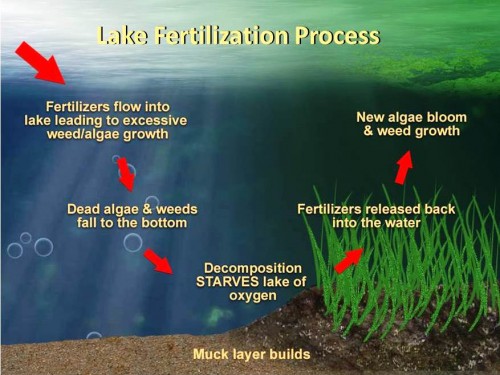Weeds
Got Excess Weeds?
Excess weeds are a warning sign that a lake is in trouble. They’re symptoms of a much deeper problem – nutrient overloading. Excess weed growth indicates that 3 destructive things are happening in the lake:
- Phosphates, nitrates and other pollutants are externally loading the lake from the watershed…
- The lake-bottom has become a compost pile refueling continuous weed and algae growth…
- The lake has become anoxic – there is not enough dissolved oxygen.
They’re also not only symptoms. Excess weeds are active players in nutrient overloading. When they die and decompose on the lake-bottom the nutrients in them are released back into the lake, continually refueling further weed and algae growth. It’s a repetitive cycle of internal nutrient overloading.

Invasive weeds like Eurasian water-milfoil, curly-leaf pondweed, and hydrilla are the most effective. They grow faster, spread quicker, demand more dissolved oxygen, and radically increase lake-bottom muck more than other native aquatic species. In fact, native aquatic species disappear when invasive weeds take over.
Herbicides are Not the Answer…
Aquatic herbicides may be effective in the short-term by killing excess surface weeds, but when poisoned weeds and algae die and sink to the bottom of the lake, the nutrients in them are released back into the water column and become nutrients for the next weed growth or algae bloom.
Once the decayed biomass is formed, nutrients are effectively locked into the lake’s ecosystem to be recycled forever.
Nature Has THE Answer
Nature has the answer to excess weed growth: Oxygen and Aerobic Bacteria. When the lake has sufficient oxygen and a healthy population of aerobic bacteria at the bottom of the lake…weeds disappear.






















